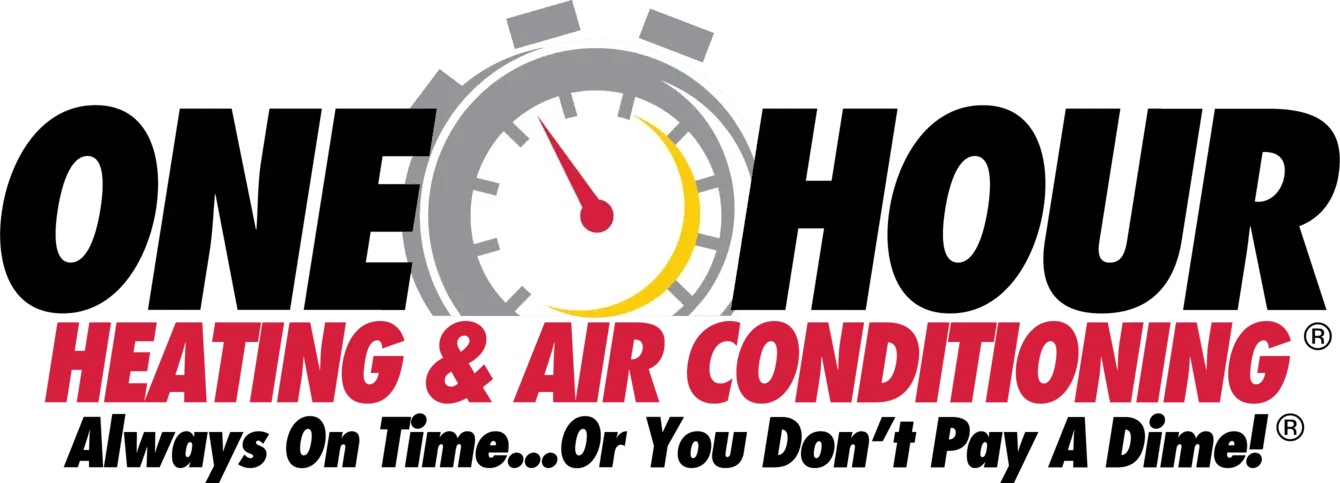How dirty ductwork impacts cooling efficiency & indoor air quality
Your home's ductwork plays a major role in how well your air conditioning system works and the quality of air you breathe. Most homeowners never think about their ducts because they stay hidden behind walls and in crawl spaces. Dirty ductwork forces your AC system to work harder while making your indoor air less healthy to breathe.
When dust, debris, and other particles build up in air ducts, they block airflow and make cooling systems less efficient. This means higher energy bills and rooms that never seem to get cool enough. The same dirt and dust also gets blown into your living spaces every time the system runs.
Clean ducts improve system efficiency, reduce energy costs, and create healthier indoor air for families.
In this article, you’ll learn how dirty ductwork affects both your AC’s cooling efficiency and the quality of the air in your home.
Below, we’ll walk through each important aspect.
- Why dirty ductwork is a hidden problem
- Dirty ductwork and its effect on AC cooling efficiency
- Indoor air quality issues linked to dirty ducts
- Duct cleaning benefits and HVAC maintenance tips
Keep reading! Understanding how dirty ducts affect both cooling performance and air quality helps homeowners make smart decisions about maintenance.
Why dirty ductwork is a hidden problem
Most homeowners never see inside their air ducts, which makes dirt buildup easy to ignore. Dust, debris, and other particles collect over time and create serious problems that affect both air quality and system performance.
How dust and debris build up inside ducts
Air ducts collect particles every time the HVAC system runs. Normal household activities create dust from skin cells, fabric fibers, and pet dander that gets pulled into the system.
Poor filtration makes the problem worse. When filters are dirty or low-quality, more particles pass through and stick to duct walls.
Common sources of duct contamination include:
- Pet hair and dander
- Pollen from outside air
- Construction dust
- Cooking particles
- Dead insects and rodent droppings
The buildup happens slowly over months and years. Most ducts collect a thick layer of dust that blocks airflow and reduces system efficiency.
Moisture creates additional problems. When humidity gets into ducts, it helps particles stick together and can lead to mold growth.
Signs your home may have dirty ductwork
Several warning signs indicate dirty ducts need attention. Visible dust around vents is the most obvious clue that particles are circulating through the system.
Key indicators of dirty ductwork:
- Dark edges around air vents
- Dust settles quickly after cleaning
- Musty or stale odors from vents
- Family members have more allergies or breathing problems
- Higher than normal energy bills
Strange smells often point to serious contamination. Musty odors suggest mold growth, while burning smells can indicate debris near heating elements.
Poor airflow from vents shows blockages inside the ducts. Some rooms may feel stuffy or fail to reach the right temperature.
Increased dust throughout the home is another clear sign. When ducts are dirty, the system spreads particles to every room instead of filtering them out.
The health and comfort risks of neglected ducts
Dirty ducts create serious health problems for family members. Contaminated air circulates throughout the home and affects everyone who lives there.
Health issues linked to dirty ducts:
- Increased asthma and allergy symptoms
- Respiratory irritation and coughing
- Headaches and fatigue
- Sinus infections
People with existing health conditions face higher risks. Children, elderly family members, and those with compromised immune systems are most vulnerable to poor air quality.
Comfort problems also develop when ducts stay dirty. Blocked airflow makes some rooms too hot or cold, forcing the system to work harder to maintain temperatures.
The EPA reports that indoor air can be up to five times more polluted than outdoor air. Dirty ductwork is a major contributor to this problem in many homes.
Dirty ductwork and its effect on AC cooling efficiency
While the EPA notes that evidence is limited, it does report that cleaning dirty cooling coils, fans, and heat exchangers can enhance HVAC efficiency even if duct cleaning alone might not.
Dirty ducts create multiple barriers that prevent air conditioning systems from cooling homes effectively. These obstructions force equipment to work harder, consume more energy, and experience premature wear.
Restricted airflow and uneven cooling
Dust and debris buildup inside ducts creates physical barriers that block air movement. These blockages reduce the amount of cool air that reaches different rooms in the house.
When airflow becomes restricted, some rooms receive less cooling than others. The living room might feel comfortable while bedrooms remain warm and stuffy.
Common airflow restrictions include:
- Dust accumulation on duct walls
- Pet hair clumps blocking vents
- Construction debris in new homes
- Pest nests or droppings
The AC system struggles to push air through these blocked pathways. This creates uneven temperatures throughout the home and reduces overall cooling performance.
Restricted ducts also cause the system to run longer cycles. The thermostat keeps calling for cooling because blocked ducts prevent enough cool air from reaching the temperature sensor.
Increased energy bills from harder-working systems
Dirty ducts force AC systems to consume significantly more electricity to achieve the same cooling results. The equipment must run longer and work harder to push air through contaminated ductwork.
A typical system with dirty ducts uses 15-25% more energy than clean systems. This translates to higher monthly electric bills during peak cooling seasons.
The increased workload affects multiple system components. The blower fan runs at higher speeds for extended periods. The compressor cycles more frequently to meet cooling demands.
Energy waste occurs through:
- Extended run times
- Higher fan speeds
- More frequent cycling
- Reduced heat transfer efficiency
Homeowners often notice their AC running constantly during hot weather. This continuous operation drives up electricity costs while failing to maintain comfortable indoor temperatures.
Shortened lifespan of AC components
Dirty ductwork accelerates wear and tear on critical AC system parts. Components designed to last 15-20 years may fail in 10-12 years when ducts remain contaminated.
The blower motor faces the greatest stress from dirty ducts. It must work harder to move air through blocked passages, causing premature motor burnout.
Components at risk include:
- Blower motors and fans
- Compressors
- Heat exchangers
- Control boards
Frequent cycling caused by restricted airflow puts additional strain on electrical components. Contactors and capacitors fail more often in systems with dirty ductwork.
The compressor also suffers when dirty ducts create cooling inefficiencies. Extended run times and poor heat transfer cause compressor overheating and eventual failure.
Regular duct cleaning helps protect these expensive components. Clean ducts allow systems to operate as designed, extending equipment life and reducing repair costs.
Indoor air quality issues linked to dirty ducts
Dirty ductwork creates several indoor air quality problems that affect everyone in the home. Contaminated ducts spread harmful particles throughout living spaces and can lead to serious health issues for family members.
Circulation of allergens, dust, and pollutants
When HVAC systems run, they pull air through dirty ducts and push it into every room. This process spreads dust, pollen, pet dander, and other particles throughout the house.
Common pollutants in dirty ducts include:
- Dust mites and their waste
- Pollen from trees, grass, and weeds
- Pet hair and dander
- Fabric fibers
- Dead skin cells
- Bacteria and viruses
These particles get trapped in ductwork over time. Each time the system turns on, it blows these contaminants into the air people breathe.
The problem gets worse during peak seasons. Summer cooling and winter heating mean the HVAC system runs more often. This increases how much contaminated air flows through the home.
People with allergies notice symptoms get worse when ducts are dirty. Sneezing, watery eyes, and stuffy noses become more common. Even healthy people may feel the effects of poor air quality.
Impact on family health and respiratory conditions
Dirty ducts create serious health problems, especially for people with breathing issues. Those with asthma, allergies, or other respiratory conditions face the biggest risks.
Health symptoms from contaminated air include:
- Frequent headaches
- Dizziness and fatigue
- Sinus irritation
- Trouble concentrating
- Shortness of breath
- Persistent coughing
Children and elderly family members are most vulnerable to these effects. Their immune systems may not handle poor air quality as well as healthy adults.
People with asthma may have more frequent attacks when ducts are dirty. The constant exposure to allergens and irritants makes it harder to control symptoms. This can lead to more medication use and doctor visits.
Respiratory infections may also happen more often. Bacteria and viruses that build up in ducts can spread throughout the home and make people sick.
Mold growth and moisture problems inside ducts
Moisture in ductwork creates perfect conditions for mold growth. This happens when humid air meets cool duct surfaces or when there are leaks in the system.
Signs of mold in ducts include:
- Musty odors when the system runs
- Visible dark spots around vents
- Increased allergy symptoms
- Persistent respiratory problems
Mold spores spread quickly through the air system. Once they reach living spaces, they can cause serious health issues. Some people are very sensitive to mold and may develop breathing problems right away.
Condensation problems make mold growth worse. When warm, humid air hits cold ductwork, water droplets form inside the ducts. This moisture feeds mold and allows it to spread.
Poor ventilation also contributes to moisture buildup. Ducts that don't have proper airflow trap humid air. This creates damp conditions where mold thrives.
Leaky ducts let outside moisture enter the system. This adds even more water to an already humid environment inside the ductwork.
Duct cleaning benefits and HVAC maintenance tips
Clean air ducts directly improve cooling system performance and reduce energy costs. Professional maintenance extends equipment life and prevents costly repairs.
How professional duct cleaning improves AC performance
Professional duct cleaning removes dust, debris, and blockages that restrict airflow. When air moves freely through clean ducts, the cooling system works more efficiently.
Dirty ducts force the AC unit to work harder to push air through the system. This extra strain increases energy consumption and utility bills.
Clean ducts allow proper air circulation throughout the home. Each room receives adequate cooling without overworking the system.
Key performance improvements include:
- Better airflow to all rooms
- Lower energy bills
- Reduced strain on AC components
- More consistent temperatures
Removing accumulated dirt and debris prevents particles from recirculating through the home. This creates cleaner indoor air and reduces dust buildup on furniture and surfaces.
Professional cleaning also eliminates potential mold growth in ductwork. Mold spores can spread through the ventilation system and affect indoor air quality.
Extending system life with regular maintenance
Regular duct maintenance prevents premature HVAC system failure. Clean ducts reduce wear and tear on critical components like fans, motors, and coils.
Dust and debris can clog system filters more quickly. When filters become blocked, the system struggles to maintain proper airflow and temperature control.
Maintenance benefits for system longevity:
- Reduced component wear
- Better filter performance
- Prevention of costly repairs
- Extended equipment warranty coverage
Professional technicians inspect ductwork during cleaning services. They identify potential problems like loose connections, damaged insulation, or air leaks before they become expensive repairs.
Regular maintenance typically costs less than emergency repairs or system replacement. Most HVAC systems last longer when ducts stay clean and well-maintained.
Why West Valley homeowners should schedule inspections
West Valley's desert climate creates unique challenges for HVAC systems. Dust, sand, and seasonal allergens accumulate quickly in ductwork throughout the year.
The area's temperature extremes require air conditioning systems to run frequently. Heavy system usage increases the rate of dust and debris buildup in ducts.
Local factors affecting duct cleanliness:
- Desert dust and sand particles
- Seasonal pollen and allergens
- High cooling system usage
- Dry climate conditions
HVAC maintenance West Valley professionals recommend annual inspections for most homes. Properties near construction sites or with pets may need more frequent service.
Professional inspections identify problems early and prevent system breakdowns during peak cooling season. Scheduling maintenance before summer ensures optimal performance when temperatures rise.
Local technicians understand regional air quality challenges and recommend appropriate cleaning schedules. They provide customized maintenance plans based on household needs and environmental factors.
Conclusion
Dirty ductwork creates real problems for both cooling systems and indoor air quality. The evidence shows that blocked ducts make HVAC systems work harder and use more energy.
Indoor air quality suffers when ducts collect dust, allergens, and other particles. These contaminants get pushed through the home every time the system runs.
Regular duct maintenance helps prevent these issues. Clean ducts allow air to flow freely and reduce the buildup of harmful particles.
The connection between duct cleanliness and system performance is clear. Clean ducts support better cooling efficiency and healthier indoor air.
Property owners should consider professional duct cleaning as part of regular HVAC maintenance. This simple step can improve comfort, reduce costs, and create a healthier living environment.
Taking care of ductwork protects both the cooling system and the people who live in the home.
Schedule a professional duct inspection with a trusted West Valley HVAC technician to improve airflow, reduce energy costs, and protect your indoor air quality.
Frequently Asked Questions
How does dirty ductwork affect my AC system?
Dirty ductwork restricts airflow, forcing your AC to work harder, which leads to higher energy bills, uneven cooling, and premature system wear.
Can dirty ducts cause indoor air quality issues?
Yes. Dust, pollen, pet dander, mold spores, and other contaminants can build up in ducts and recirculate through your home, worsening allergies and respiratory problems.
What are the signs that my ducts need cleaning?
Warning signs include visible dust around vents, musty odors, inconsistent room temperatures, increased allergy symptoms, and rising energy bills.
How often should ducts be cleaned in West Valley homes?
Most homes in West Valley benefit from duct cleaning every 3 to 5 years. Homes with pets, recent renovations, or occupants with respiratory conditions may need more frequent service.















